Healix - mindful audio
Healix is a mobile and watch app developed during the COVID-19 pandemic to help users maintain their physical and mental wellbeing through immersive, audio-guided workouts at home. Designed in response to the widespread challenges of exercising in isolation, Healix transforms limited indoor space into a dynamic environment for movement and mindfulness. The project was completed as part of a university assignment and was awarded first place in its unit..

Movement in isolation feels unsustainable.
During the COVID-19 pandemic, millions turned to home workouts as a way to stay active—but many quickly lost motivation. Without variety, social connection, or meaningful engagement, sessions felt repetitive and uninspiring. Most fitness solutions focused narrowly on appearance or performance, offering little support for mental wellbeing. What users really needed was a more balanced approach—one that treated movement as a way to reconnect with the body and mind. Healix was designed to meet that need, transforming isolated workouts into mindful, immersive experiences..
Approaches to uncover the problem
To define a meaningful solution, the team first needed to understand the current state of home fitness—why it wasn’t working, and what users were really looking for. A combination of primary and secondary research was used to uncover user needs, motivations, and pain points.
Secondary research: online ethnography
To understand the current landscape of digital fitness, we utilised passive observation on social media apps, forums and comments to gather research data.
A thematic analysis of this research data uncovered the following challenges that shaped users' experiences with at-home workouts:
✩‧₊˚
Loss of community & third spaces
With homes, offices, gyms, and social spaces collapsing into one, users struggled to mentally separate activities and form sustainable habits.
✩‧₊˚
Disrupted routines creates fatigue
What once fit naturally into a daily schedule now required effort, intention, and mental energy
。˚❀
Comparison & Toxic body culture
Social media reinforced body image pressures and comparison, rather than supporting wellbeing.
⁂
Fitness became performative, not mindful
What once fit naturally into a daily schedule now required effort, intention, and mental energy
Thematic Analysis of online ethnography
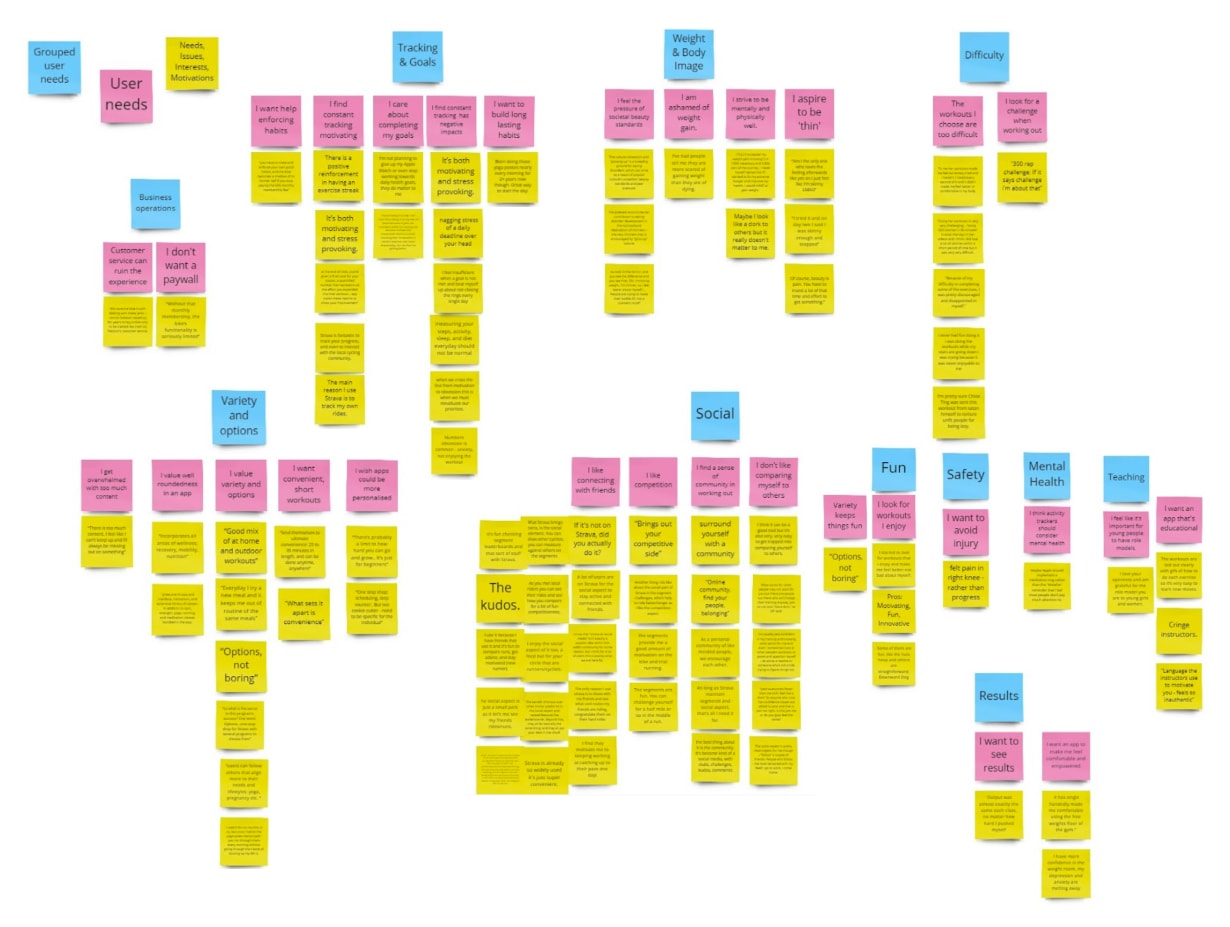
Competitor & market analysis
Interface analysis
Using Don Norman (1988)’s principles of design ,we analysed existing interfaces to assess the key strengths and weaknesses of each.
Additionally, it would also go on to inform our later ideation and prototyping stages; understanding what makes an effective yet unique interface.
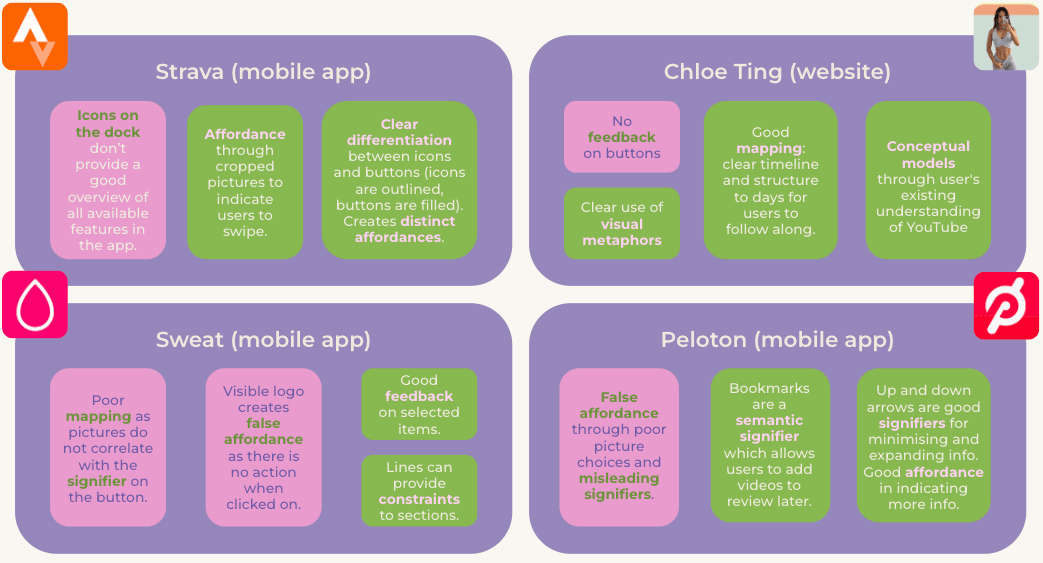
Oppurtunity Identification
To better understand the user's environment and existing product options, we conducted a competitor analysis across digital fitness apps and platforms.
With the insights from our interface analysis, we identified key strengths, weaknesses, and points of differentiation in the current market. Analysis of this helped us identify critical gaps in the market and opportunitiesfor our solution to stand apart.
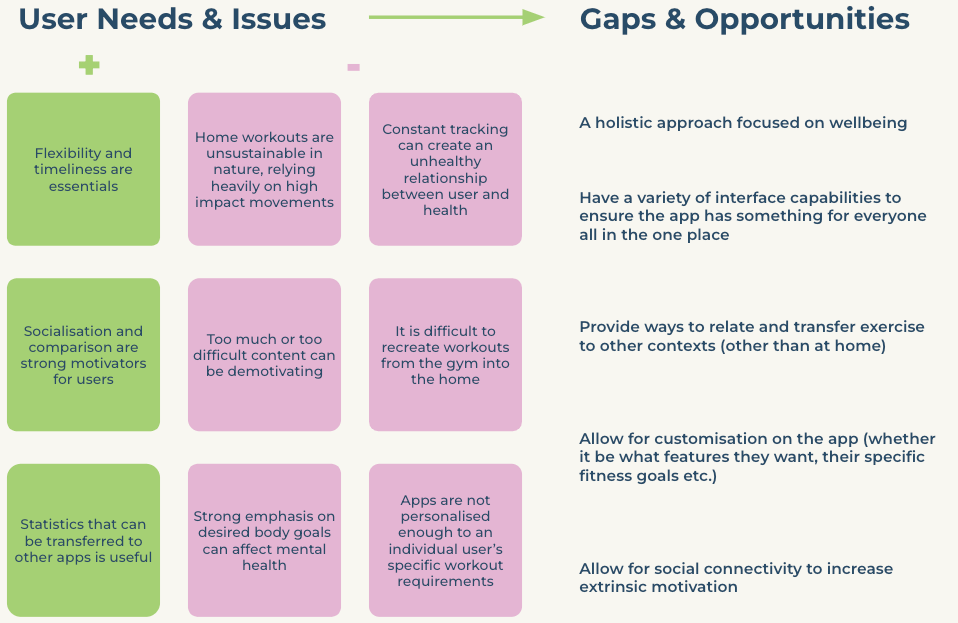
Primary research (survey & interviews)
To deepen our understanding of user needs, we conducted surveys and interviews with our target demographic. The survey captured quantitative data on workout habits, motivations, and challenges, while interviews provided qualitative insights into emotional drivers, routines, and barriers to consistency. This mixed-method approach helped us uncover nuanced patterns in behaviour and sentiment, shaping a more human-centred problem definition.
Affinity diagram of interview data
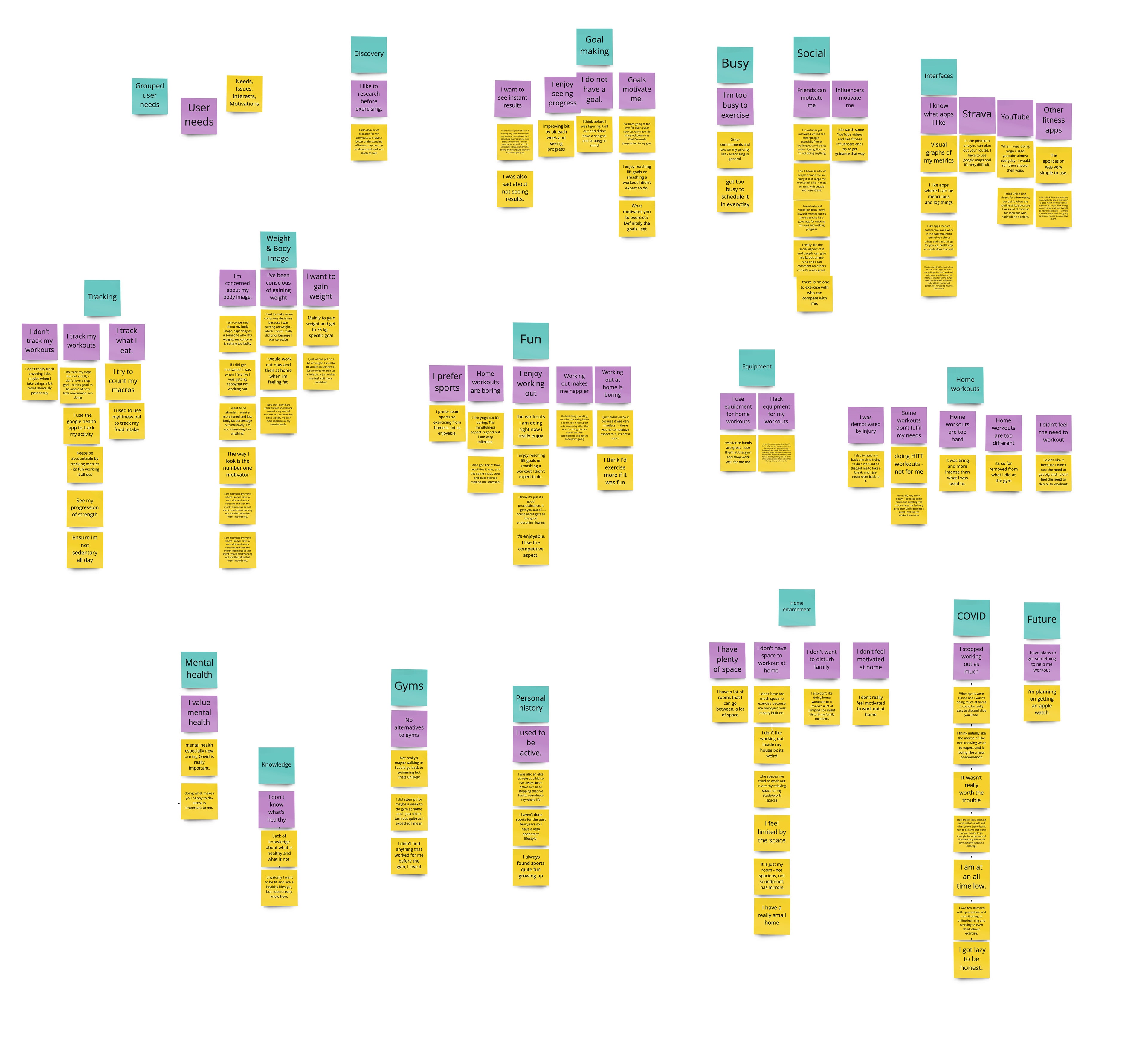
Using an affinity diagram to collate the data from 5 interviews. These where then validated by the 21 survey participants. In doing this, we were able to converge to a key problem area. Under this we identified 3 further problem areas that were a root cause of the problem area.
Home workouts are unsustainable because they are:
✩‧₊˚
Boring or unengaging
。˚❀
Driven by body image and comparison
:*:*:
Done alone and lack community
Target Personas

⋆˚✿ Experienced Evelyn ✿˚⋆
Motivation
Maintain structure & progress of their existing routine.
Needs
Engaging and challenging workouts that mimic pre-lockdown routines.
Role
Self-driven users seeking to adapt their expertise to new, limited environments.

⁺‧⁂ Beginner Bethany ⁂‧⁺
Motivation
Improve appearance & wellbeing through accessible, trend-driven workout content.
Needs
Clear guidance, fun formats, and positive reinforcement to build sustainable habits.
Role
Curious beginners exploring movement as a new part of their identity and lifestyle.
Concept Development
A total of 28 ideas were developed using sketching methods of Brain Writing and Crazy 8. These techniques helped push the boundaries of obvious solutions into more unique, targeted and interesting ideas. They also gave us room to build off each other’s ideas, combining different successful elements to form more holistic concepts.After voting, we decided to further evaluate our top 6 ideas with a decision matrix. We created a criteria to rank each idea, narrowing out ideas down to the top 3
Low fidelity sketches of top 6 concepts
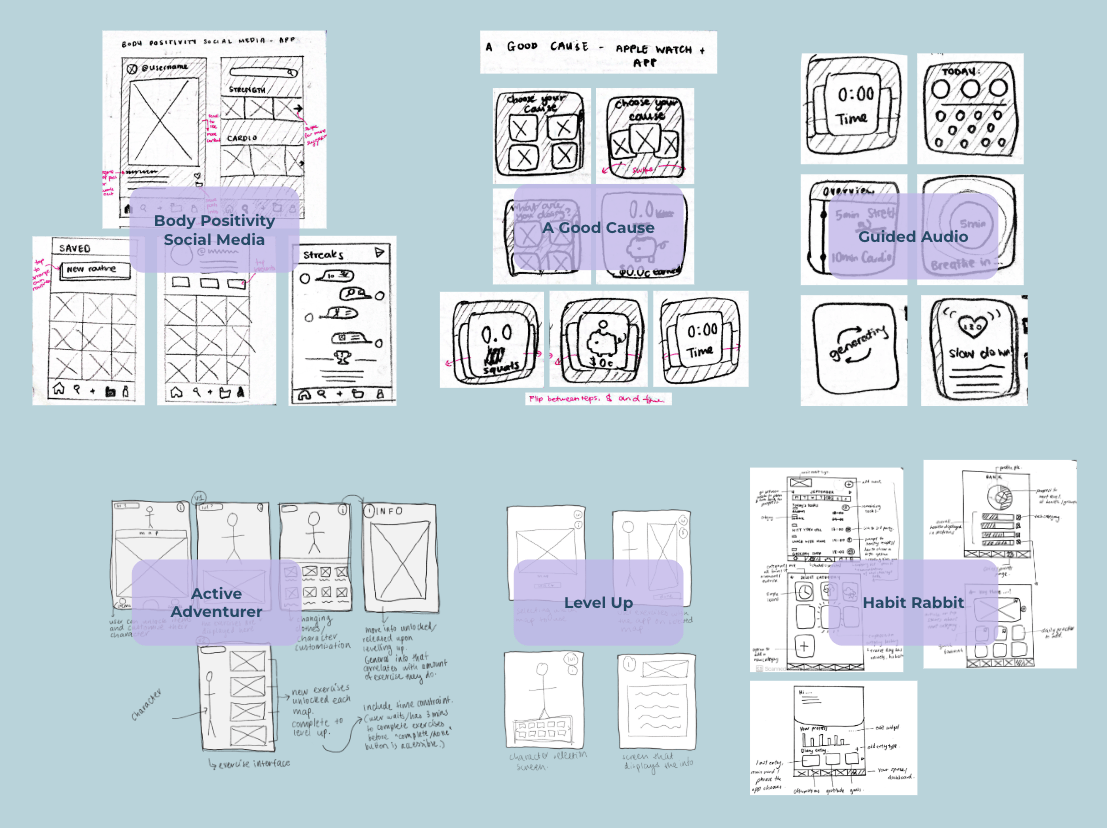
Decision matrix of top 6 concepts
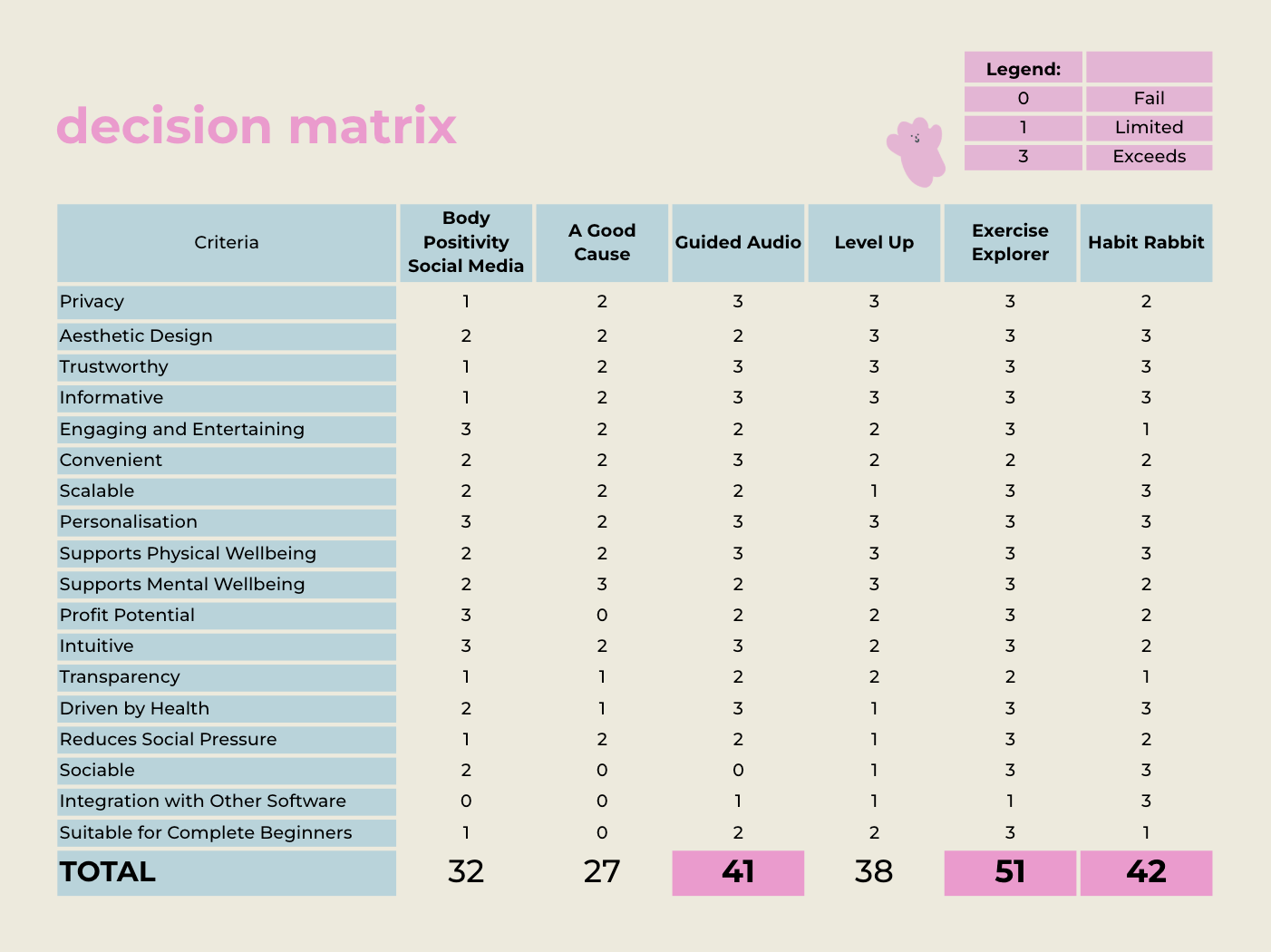
Lo-fidelity iterations + user testing
To quickly validate our ideas, we developed a series of low-fidelity prototypes that explored different approaches to interaction, navigation, and content delivery. These were tested with users through a combination of guided tasks and open-ended exploration. We applied theSystem Usability Scale (SUS)as a heuristic evaluation tool to gather consistent, quantitative feedback on usability. The results helped usidentify friction points, refine the user journey, and prioritise features that resonated most with our target demographic.



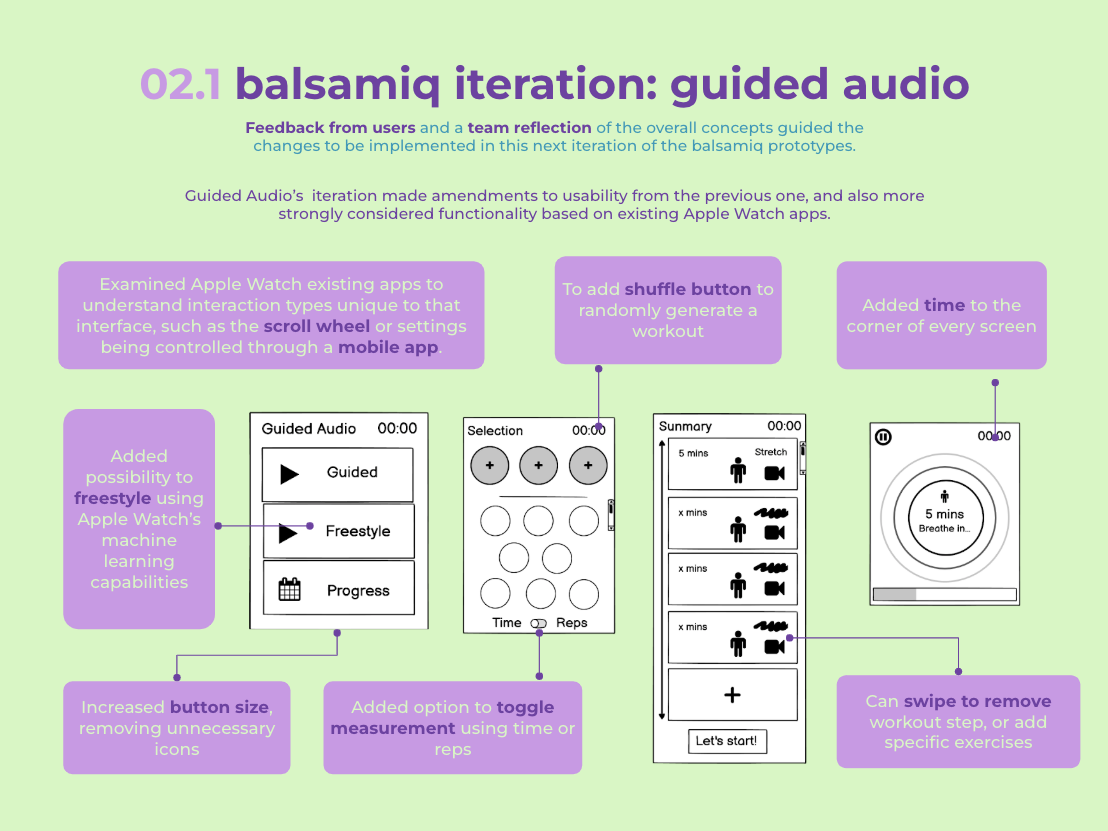

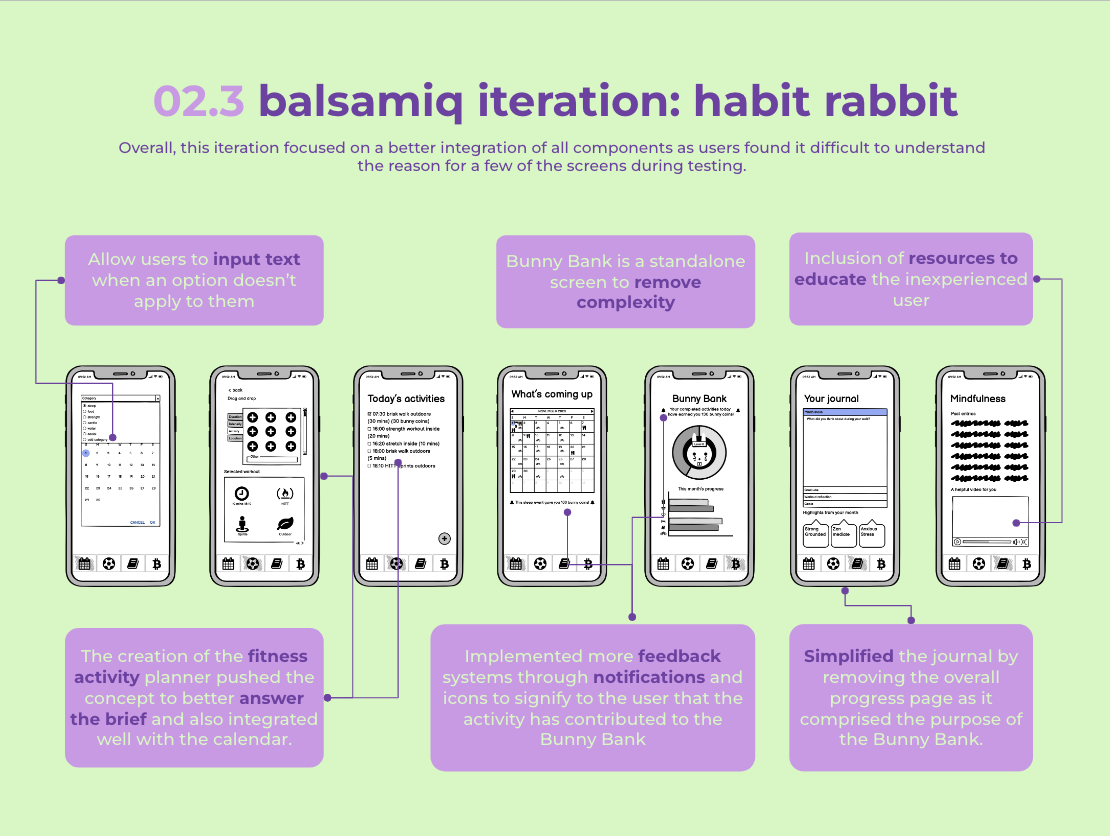
Concept iteration
The evaluation matrix highlighted clear potential in both Guided Audio and Habit Rabbit, though each came with limitations. Habit Rabbit, while strong in engagement, lacked originality and didn’t focus enough on fitness—missing key elements of the brief. Guided Audio, on the other hand, aligned more closely with our goals but was overly simplistic, limited by the small 38–44mm Apple Watch screen.
By merging the two, we created a hybrid experiencethat leveraged the watch for presence-driven, audio-guided workouts, while the mobile app extended functionality—allowing for deeper interaction, progress tracking, and personalisation.This combination bridged the gaps of both concepts and aligned more meaningfully with our users' needs.

Low fidelity screens and evaluation of Healix
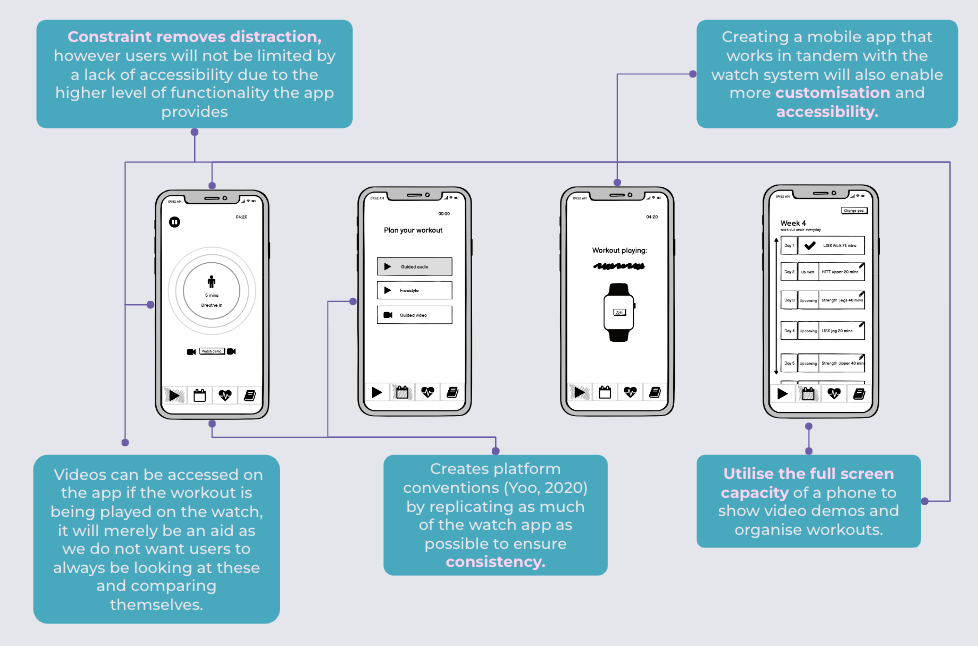

Low fidelity screens and evaluation of Healix

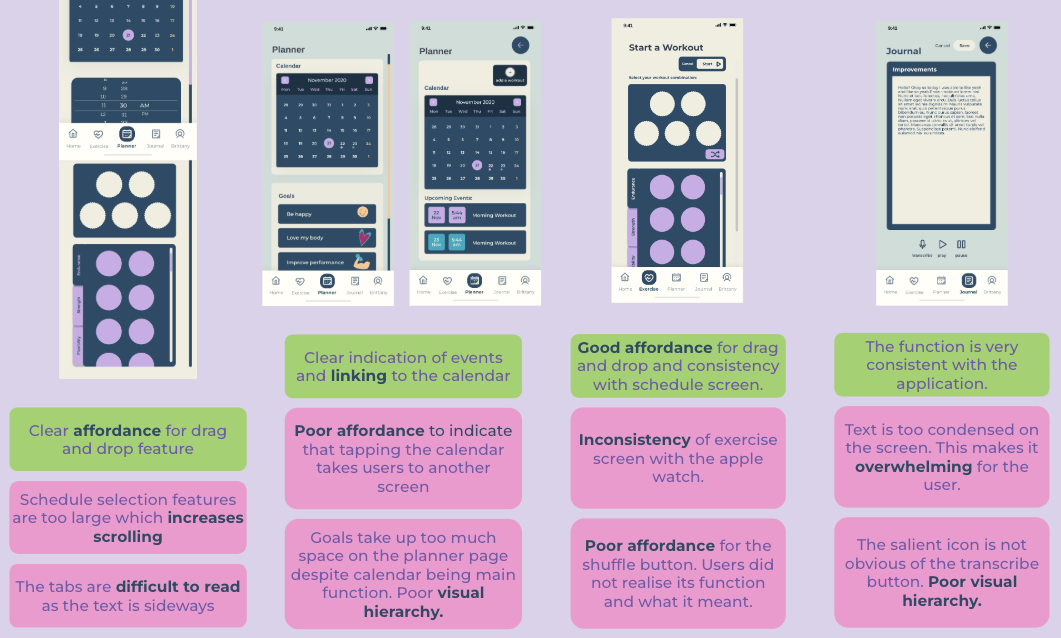
The Solution: Healix–mindful audio
Healix responds to key user frustrations by offering a more mindful, personalised fitness experience that prioritises internal motivation over comparison. By combining audio-only workouts with goal-setting and journaling features, the app empowers users to stay consistent and connected to their own progress.
✩ ˚
Audio-only workouts remove visual comparison,helping users focus on how they feel, not how they look.
:*:*:
Journaling promptsshift focus from instant results to long-term wellbeing.
。˚❀
Custom, short-term goals (e.g. step count targets) provideinstant wins that keep users engaged
⁂
Content is personalised based on diary entries, reducing overwhelm and guiding users with relevant, timely support.
Key Learnings
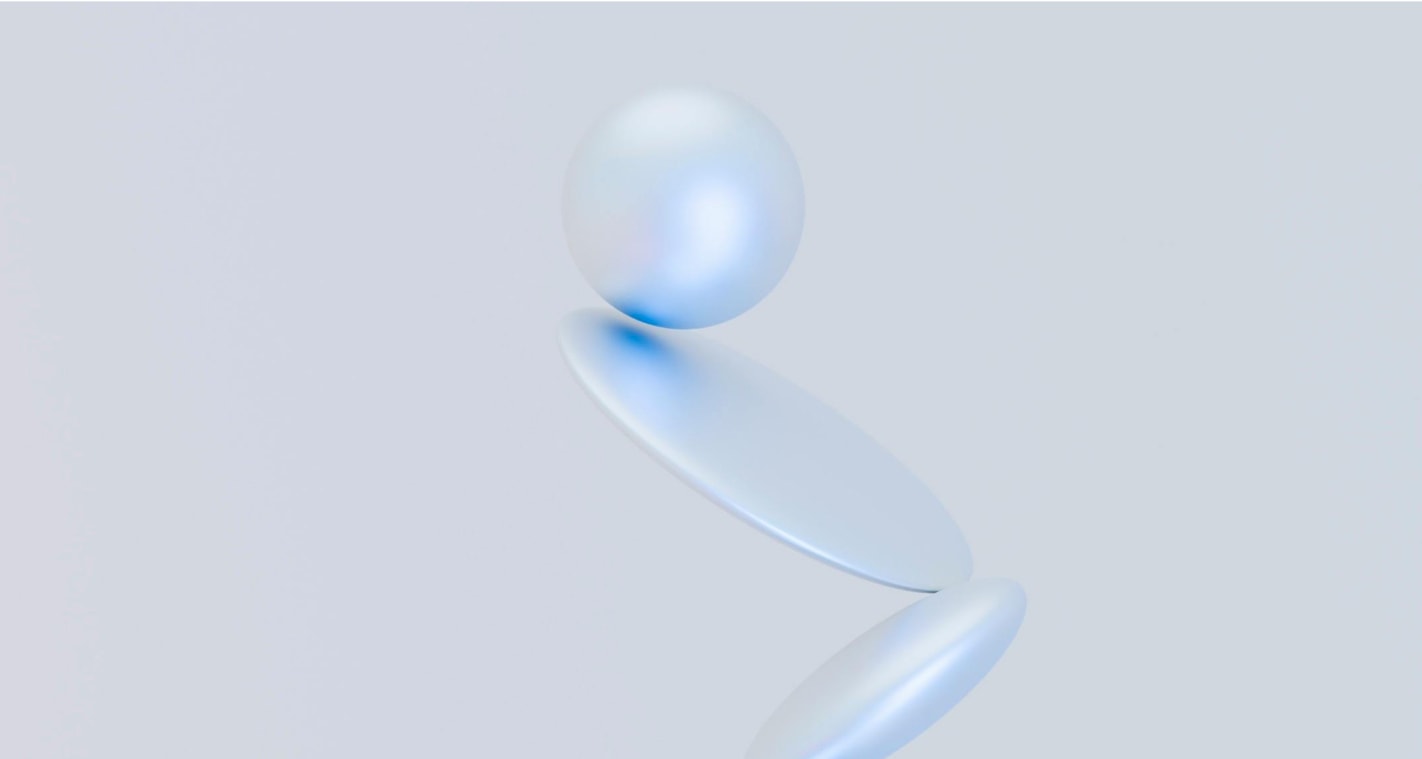
Constraints drive creativity and clarity
Working within the limitations of the Apple Watch—such as screen size, interaction simplicity, and limited content display—forced the team to prioritise essential features and streamline the experience. This pushed us to focus on audio-first guidance and behaviour-driven interactions, leading to a more mindful, distraction-free experience. Rather than seeing constraints as blockers, we used them as design prompts to remove friction, reduce cognitive load, and guide users toward healthier routines with greater clarity.
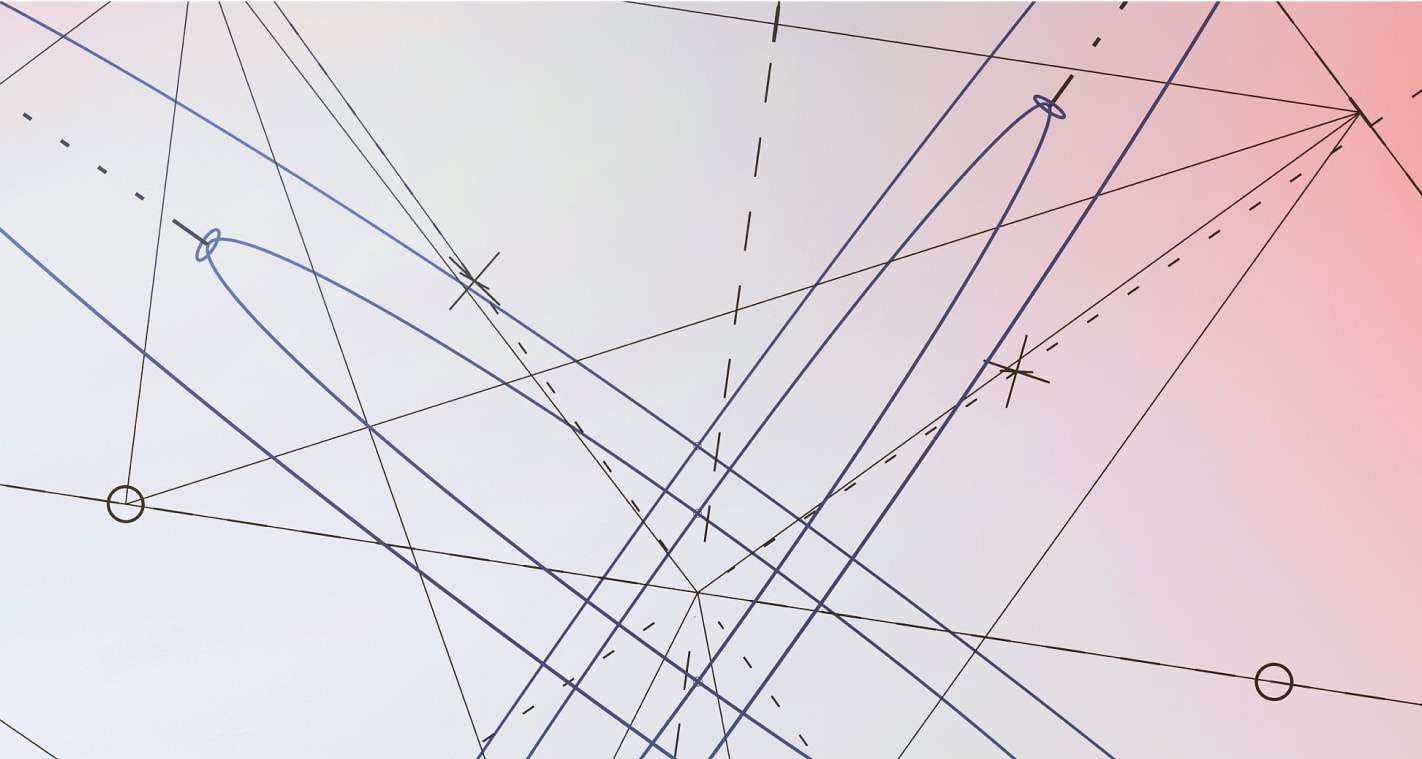
Hybrid ecosystems improve usability
Designing for both Apple Watch and mobile allowed us to distribute the user experience across devices based on context and intent. The watch handled real-time, embodied interactions—like step tracking and in-the-moment audio prompts—while the mobile app supported reflection, planning, and deeper customisation. This separation created a seamless ecosystem where each touchpoint reinforced the other, improving usability, reducing feature overload per device, and aligning with natural user behaviours across different moments in their day.
Inspired by What You See?
View my next case study to see how I apply design thinking across different challenges, industries, and user needs — crafting thoughtful, creative solutions in motion.
View Case Study